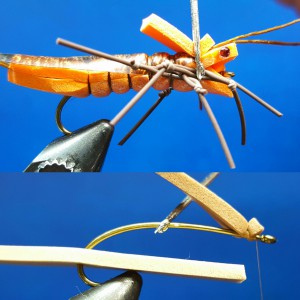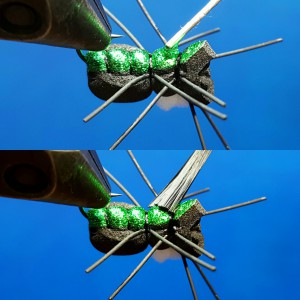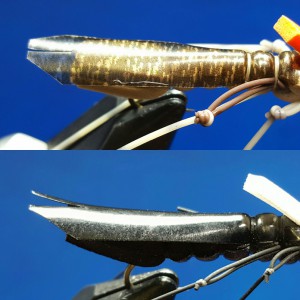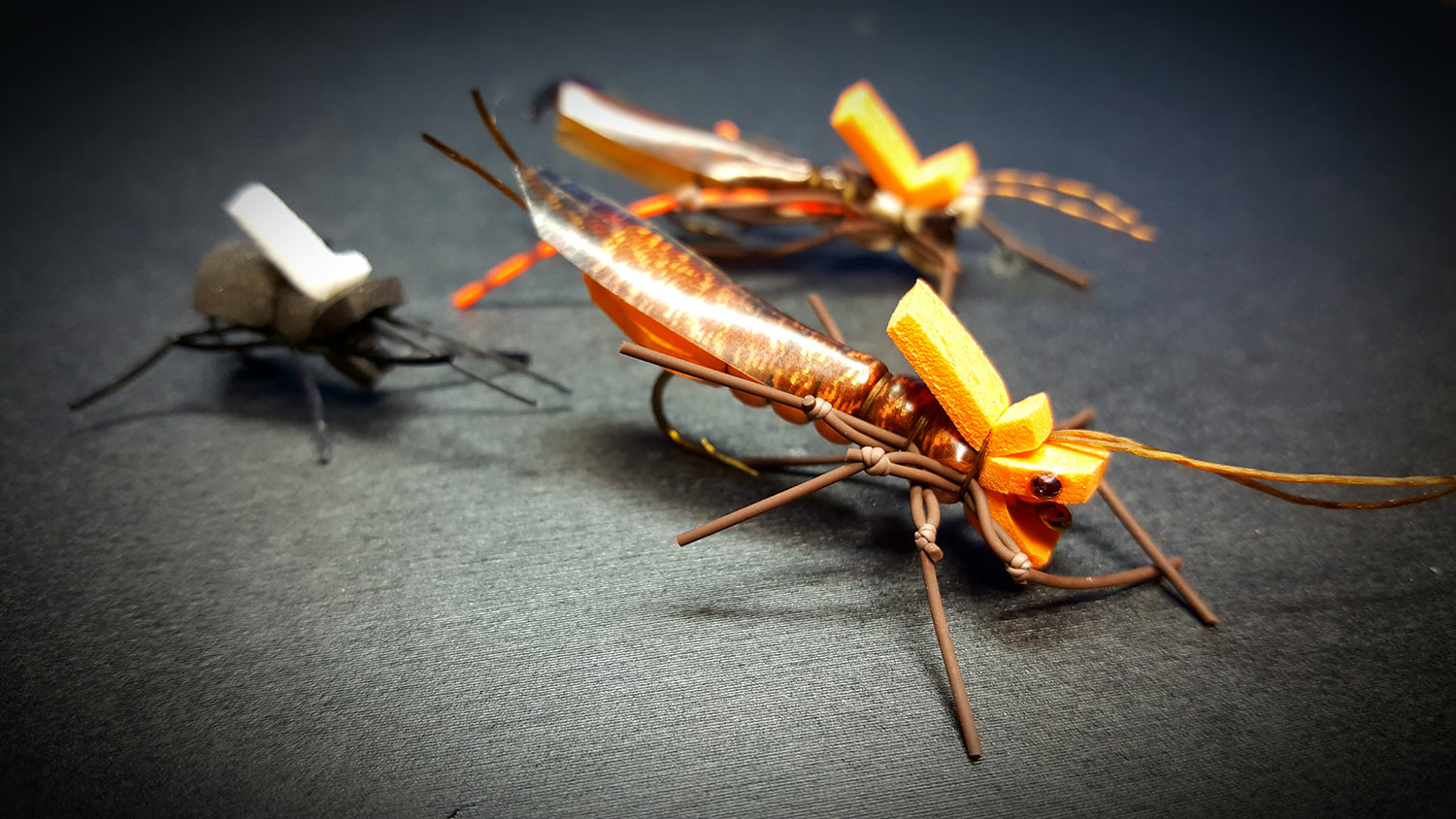By Bob Reece
Large foam terrestrial fly patterns have exploded in popularity over the past several years.
Their intriguing aesthetics, all day buoyancy and ability to elicit violent takes have earned them a place in fly boxes worldwide. However, the durability of these high floating flies can sometimes become an issue. The three following tips can help you beef up the longevity of your favorite foam offerings.
 The use of super glue in the creation of foam terrestrials exponentially increases their lifespan. When tying these patterns, I follow two rules of use. I apply super glue wherever foam is attached to the hook shank and when two foam surfaces contact each other. The glue applied to the shank inhibits the pattern from twisting loose as it is used. Glue used to bond two pieces of foam together reduces the stretching of the foam. This stretching leads to tears and cuts that progressively weaken the material. In addition to this, a small drop can be placed on each of the tie in points for any rubber legs and antennae. This prevents them from being dislodged when setting the hook and fighting the fish.
The use of super glue in the creation of foam terrestrials exponentially increases their lifespan. When tying these patterns, I follow two rules of use. I apply super glue wherever foam is attached to the hook shank and when two foam surfaces contact each other. The glue applied to the shank inhibits the pattern from twisting loose as it is used. Glue used to bond two pieces of foam together reduces the stretching of the foam. This stretching leads to tears and cuts that progressively weaken the material. In addition to this, a small drop can be placed on each of the tie in points for any rubber legs and antennae. This prevents them from being dislodged when setting the hook and fighting the fish.
 UV clear coats have countless uses in the process of fly tying. Their cured surface provides an abrasion-resistant barrier for the underlying material. Several of the terrestrials that I tie incorporate Wapsi’s Loco Foam on the underside of the pattern. Brushing on a thin layer of UV cure prevents damage to the metallic covering, as well as the underlying foam. This same technique can also be used to add a slight sheen and protect the bottom of any standard foam pattern. Due to their ease of being brushed out, products like Loon Flow and Clear Cure Goo Hydro are best suited for this application.
UV clear coats have countless uses in the process of fly tying. Their cured surface provides an abrasion-resistant barrier for the underlying material. Several of the terrestrials that I tie incorporate Wapsi’s Loco Foam on the underside of the pattern. Brushing on a thin layer of UV cure prevents damage to the metallic covering, as well as the underlying foam. This same technique can also be used to add a slight sheen and protect the bottom of any standard foam pattern. Due to their ease of being brushed out, products like Loon Flow and Clear Cure Goo Hydro are best suited for this application.
 Prior to the use of foam for fly tying, numerous materials were used to imitate the wings of large terrestrials. As foam began to replace traditionally tied bodies, many of these wing supplies came along for the ride. While traditional elk hair, deer hair and turkey feathers create an effective silhouette of the wing, they lack durability. The substitution of Thin Skin for these customary ingredients solves this problem by creating a bulletproof wing. The material itself will not wear out and also prevents the underlying top of the foam body from being torn by trout teeth. Furthermore, the pattern varieties and sheen of Thin Skin provide an aesthetically accurate imitation of terrestrial wings.
Prior to the use of foam for fly tying, numerous materials were used to imitate the wings of large terrestrials. As foam began to replace traditionally tied bodies, many of these wing supplies came along for the ride. While traditional elk hair, deer hair and turkey feathers create an effective silhouette of the wing, they lack durability. The substitution of Thin Skin for these customary ingredients solves this problem by creating a bulletproof wing. The material itself will not wear out and also prevents the underlying top of the foam body from being torn by trout teeth. Furthermore, the pattern varieties and sheen of Thin Skin provide an aesthetically accurate imitation of terrestrial wings.
Toughening up your foam terrestrials saves headaches and time on the water. Take the few seconds required to implement these tying tactics. This small scale investment will pay huge durability dividends.
Check out custom made fly tying kits for my terrestrial patterns and others.
If you’re a buyer and not a tier, click here to buy any of my patterns offered through Orvis.
Click here for my how to tying videos, fishing tips and more.
Bob Reece Gink & Gasoline www.ginkandgasoline.com hookups@ginkandgasoline.com Sign Up For Our Weekly Newsletter!

I’ve never used Thin Skin, looks like good stuff. Can’t wait to try it.
David,
You won’t regret it. It’s great stuff. Hit me up if you have any questions. Have a good one.
Bob Reece
Killin it bob! Come up to Casper and gloat the Platte with me sometime. Oh and thin skin is the bee’s knees or wings, depends on how you look at it!
Pingback: Tippets: Toughen Up Terrestrials, Interview with Tom Karrow, Avoiding Redds | MidCurrent